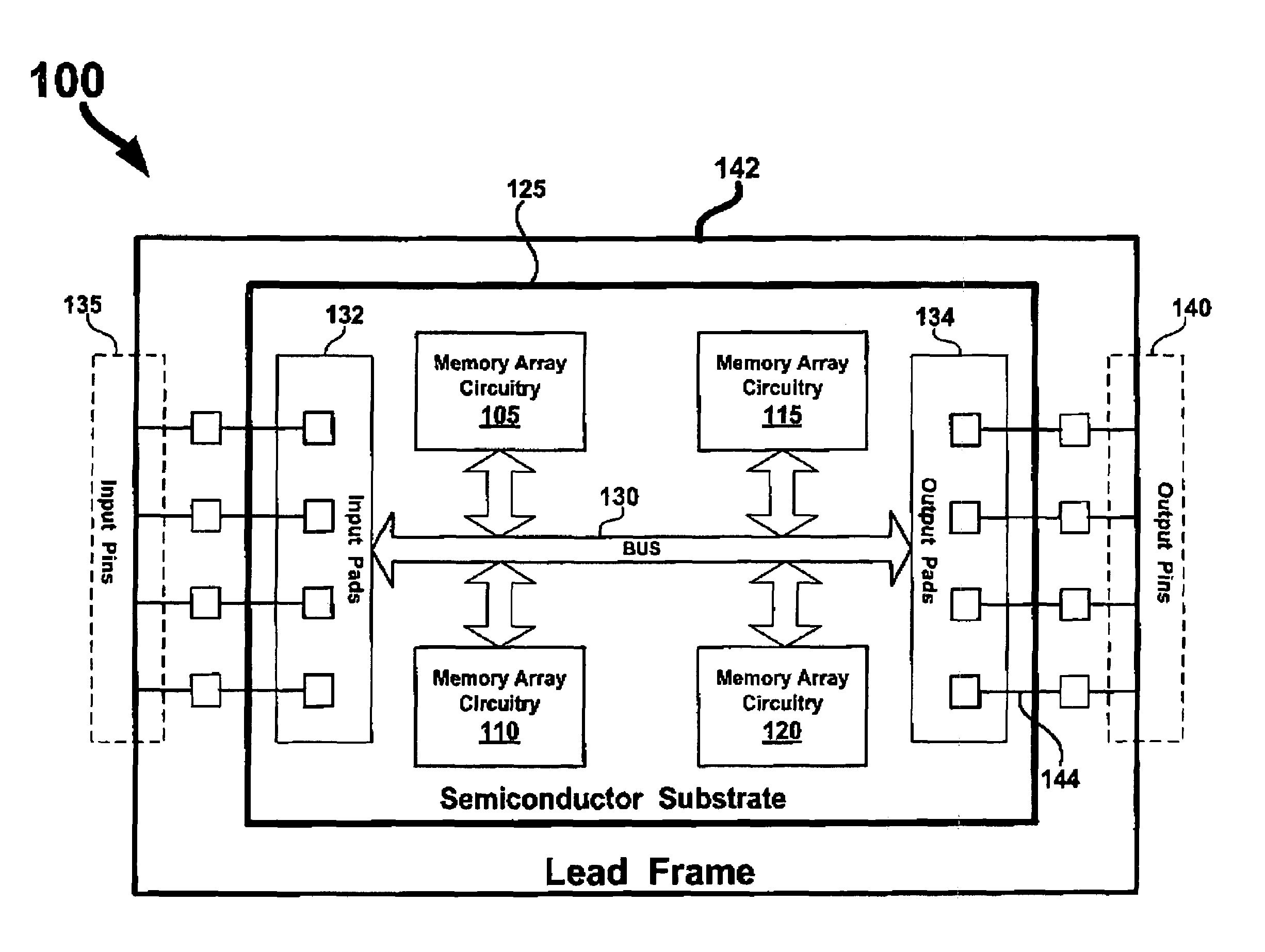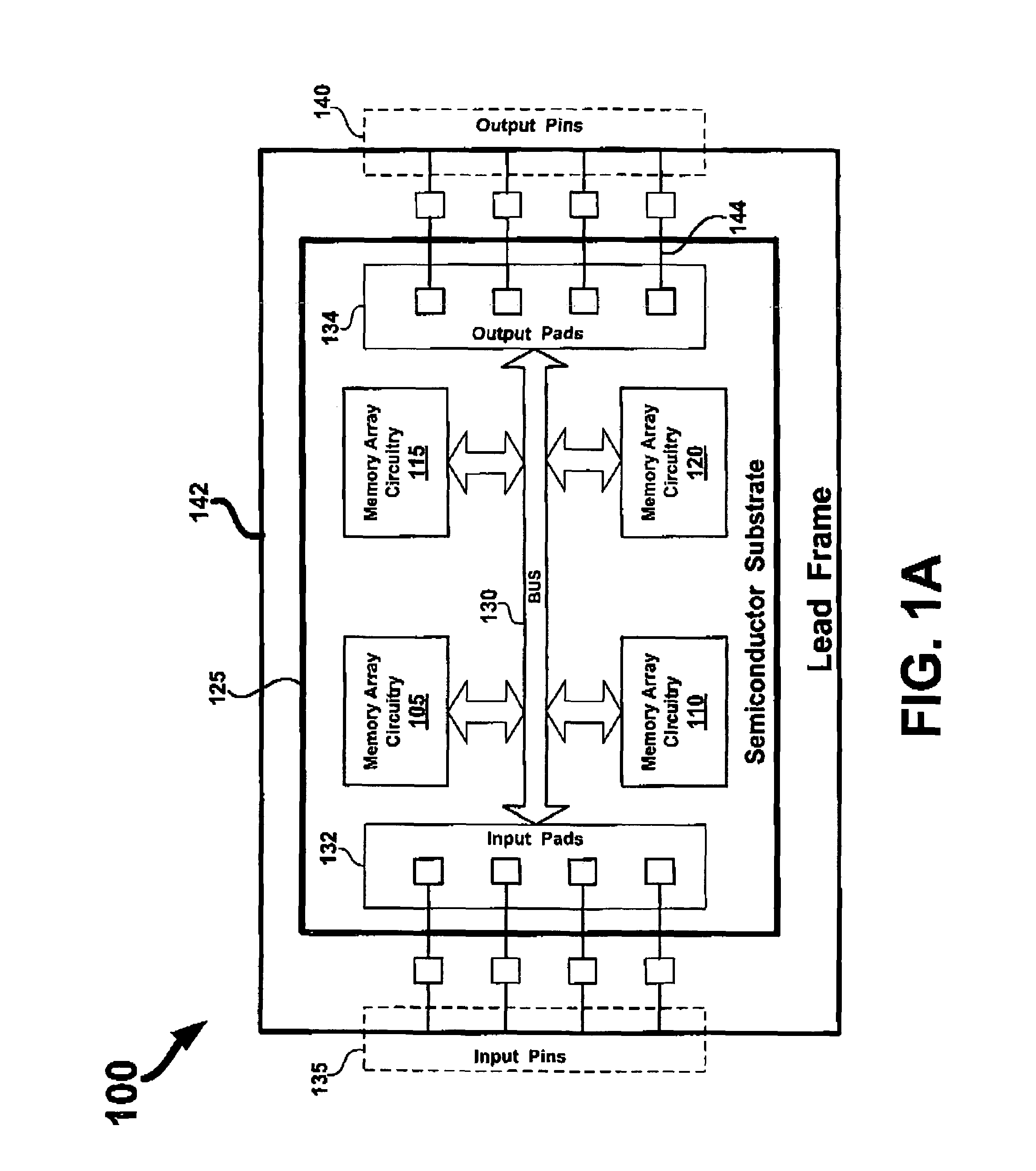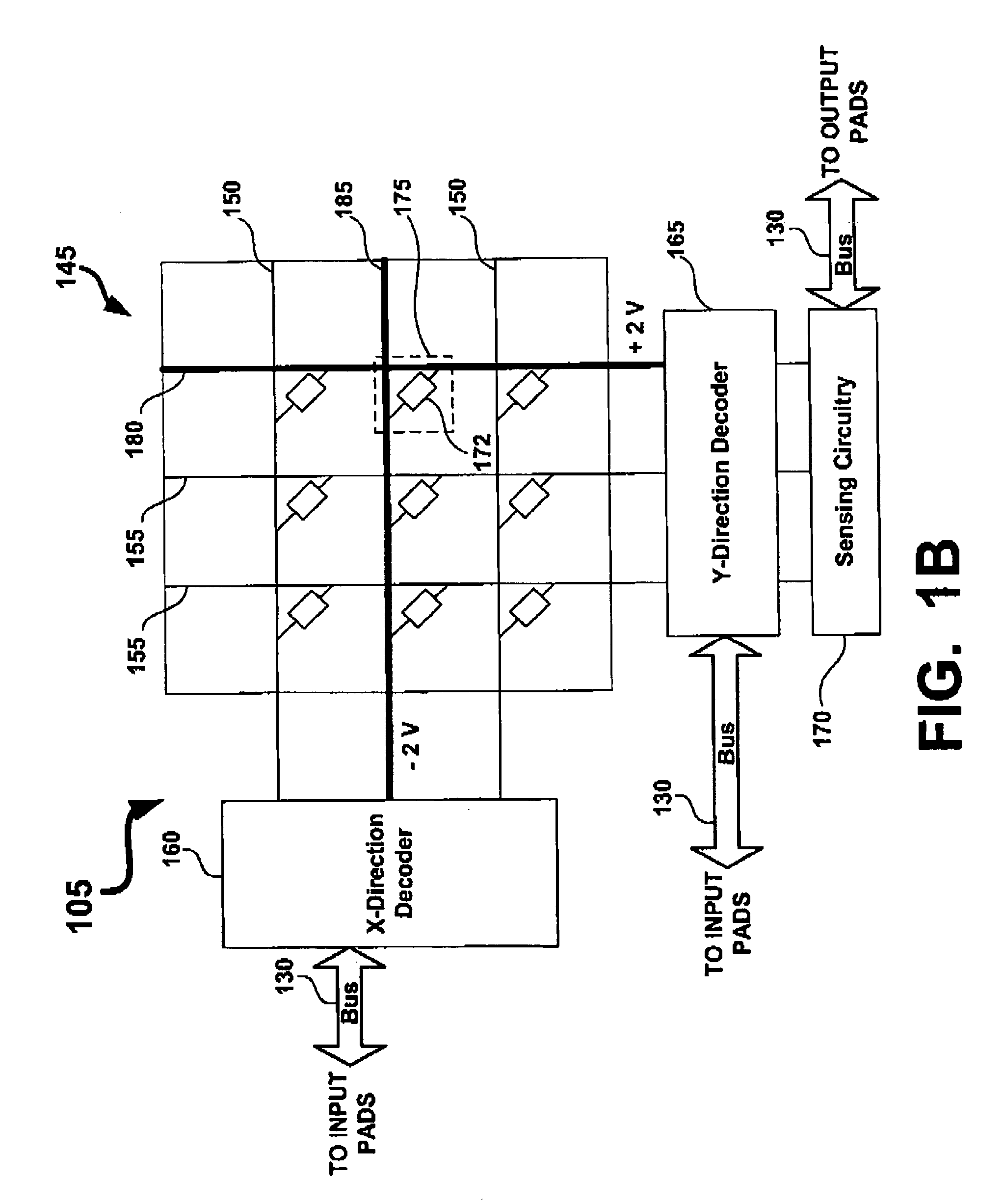Low read current architecture for memory
a memory array and low read current technology, applied in the direction of information storage, static storage, digital storage, etc., can solve the problems of difficult to distinguish between the read current and the leakage current, leakage current can be considered noise that masks the read current signal, and memory elements that share a row or column conductor with the memory element being read
- Summary
- Abstract
- Description
- Claims
- Application Information
AI Technical Summary
Benefits of technology
Problems solved by technology
Method used
Image
Examples
Embodiment Construction
[0023]In the following detailed description, numerous specific details are set forth to provide a through understanding of the present invention. It will be apparent to one skilled in the art that the present invention may be practiced without some or all of these specific details. In other instances, well known elements and process steps have not been described in depth in order to avoid unnecessarily obscuring the present invention.
[0024]FIG. 1A is a block diagram of an integrated circuit 100 that performs memory functions. Memory array circuitry 105, 110, 115, and 120, which are typically fabricated on a semiconductor substrate 125, are components of the integrated circuit 100. Memory array circuitry 105-120 includes arrays of memory cells and associated peripheral circuitry. A bus 130 connects the memory array circuitry 105-120 to input pads 132 and output pads 134. Input pads 132 and output pads 134 are connected to input pins 135 and output pins 140 through interconnects 144, ...
PUM
 Login to View More
Login to View More Abstract
Description
Claims
Application Information
 Login to View More
Login to View More - R&D
- Intellectual Property
- Life Sciences
- Materials
- Tech Scout
- Unparalleled Data Quality
- Higher Quality Content
- 60% Fewer Hallucinations
Browse by: Latest US Patents, China's latest patents, Technical Efficacy Thesaurus, Application Domain, Technology Topic, Popular Technical Reports.
© 2025 PatSnap. All rights reserved.Legal|Privacy policy|Modern Slavery Act Transparency Statement|Sitemap|About US| Contact US: help@patsnap.com



